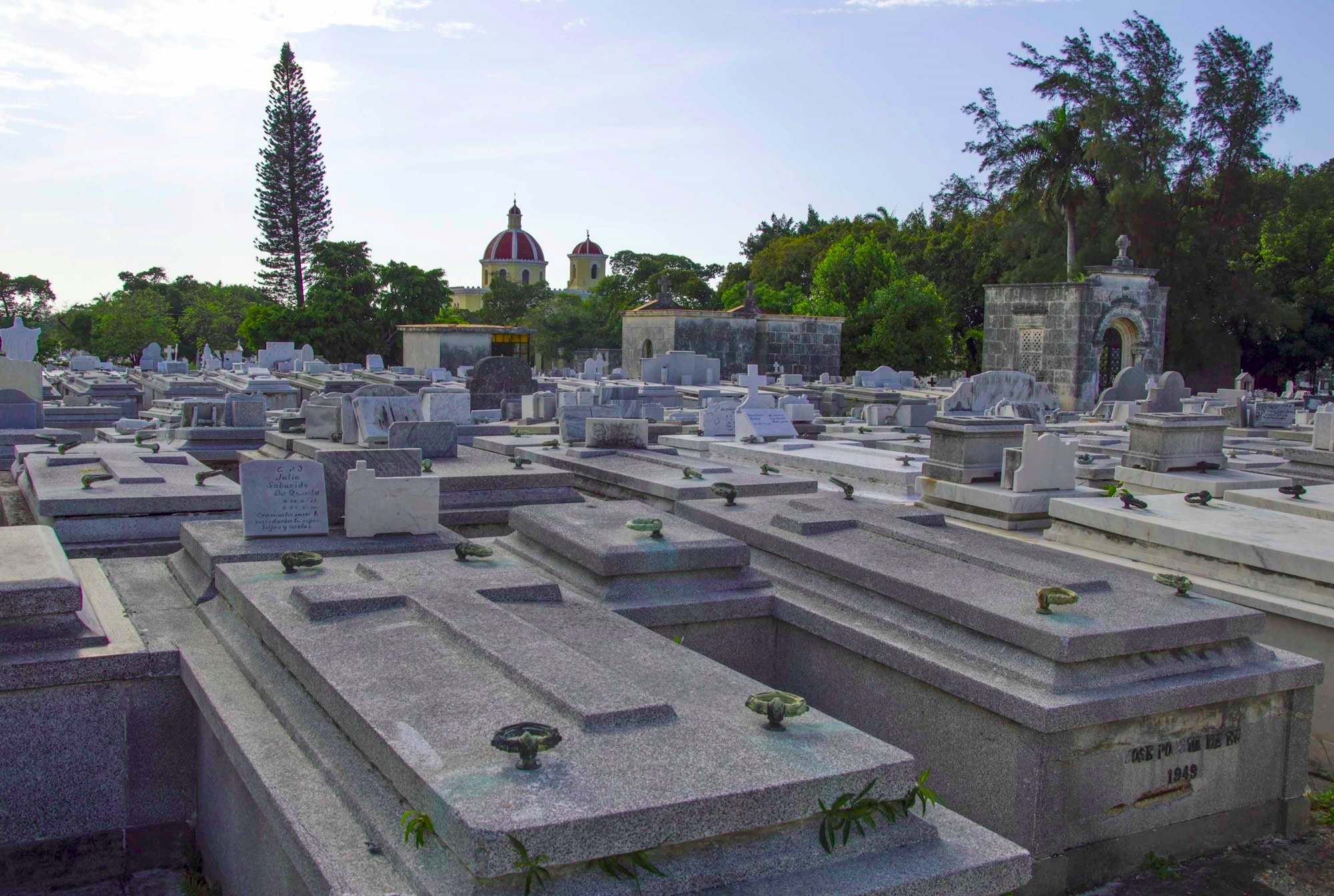Colon Cemetery in Havana is one of the city’s main attractions. The graves are adorned with luxurious marble tombstones, some of which are true works of art. It’s one of the most famous and significant cemeteries in Latin America. In this article, you will find a guide to the most famous toms of Colon cemetery.
Содержание
- What you need to know before visiting Colon Cemetery
- History of Colon Cemetery
- 15 Famous Mausoleums in Colón Cemetery in Havana
- Firefighters Memorial — The Tragedy of 1890
- Monument to the Medical Students
- Mausoleum of José Gener y Batet — Tobacco Magnate
- Mausoleum of Julio de Quesada
- Pantheon of Falla Bonet
- José Matta’s Pyramid
- The Grave of Fidelity
- La Milagrosa — The People’s Saint
- The Man Buried Vertically
- Leocadia Herrero — The Spiritual Medium of Santeros
- José Raúl Capablanca
- Ibrahim Ferrer
- Gaspar Villate
What you need to know before visiting Colon Cemetery
Colon Cemetery is a tourist attraction in the Vedado district of Havana. Main entrance is located at Calle 12, Vedado.
⏱️ The cemetery is open from 8:00 AM to 5:00 PM.
💰 Entry to the cemetery costs about $5. You can explore it on your own or book a free tour on Civitatis (don’t forget to tip your guide!).
I recommend to download this pdf map, where all the graves are marked.
How to get there?
🚕 The easiest way to get there is by taxi. The ride should cost no more than $5 if you’re good at bargaining.
🚌 If you decide to take the bus, you can find the routes and schedules in the app HabanaTrans.
Where to stay in Havana
🔸 Havana Vieja, or Old Havana, is the historic heart of the city, filled with colonial buildings, museums, cafes, and restaurants. Even though it’s beautiful and convenient for a tourist, there are some drawbacks to it. It’s a popular spot for tourists, so it can get quite busy, and the prices are higher than in other areas of Havana. You might encounter very persistent guides offering their services.
- Casa particular. You can rent a room in a colonial house for as low as $14. You will share the common space with the cuban family, which is a great way to experience a local culture!
- Apartment. Alternatively, you can get an apartment with WiFi for around $45.
🔸Vedado is a modern district in Havana known for its restaurants, bars, and nightclubs. It’s home to Plaza de la Revolución and the National Theater of Cuba. This area offers a more relaxed and contemporary vibe compared to the bustling Old Havana. However, it’s a bit further from the historical center, so you may need to take a taxi or public transport to visit Old Havana.
- Vedado offers many comfortable apartments equipped with air conditioning and WiFi. You can find a nice apartment for about $40.
Sim Card and WiFi on Cuba
You can buy a Cuban eSIM through the Airalo app. Some hotels in Cuba now offer internet (though it’s often slow and unreliable), and local residents might also “rent” you their SIM cards.
Check out my article: AirAlo eSim. Pros and cons after using it for 2 years
❗️While this would be enough to connect to social media (through VPN, of course) and send a message to your mom, you can’t rely on cuban internet for online work.
History of Colon Cemetery
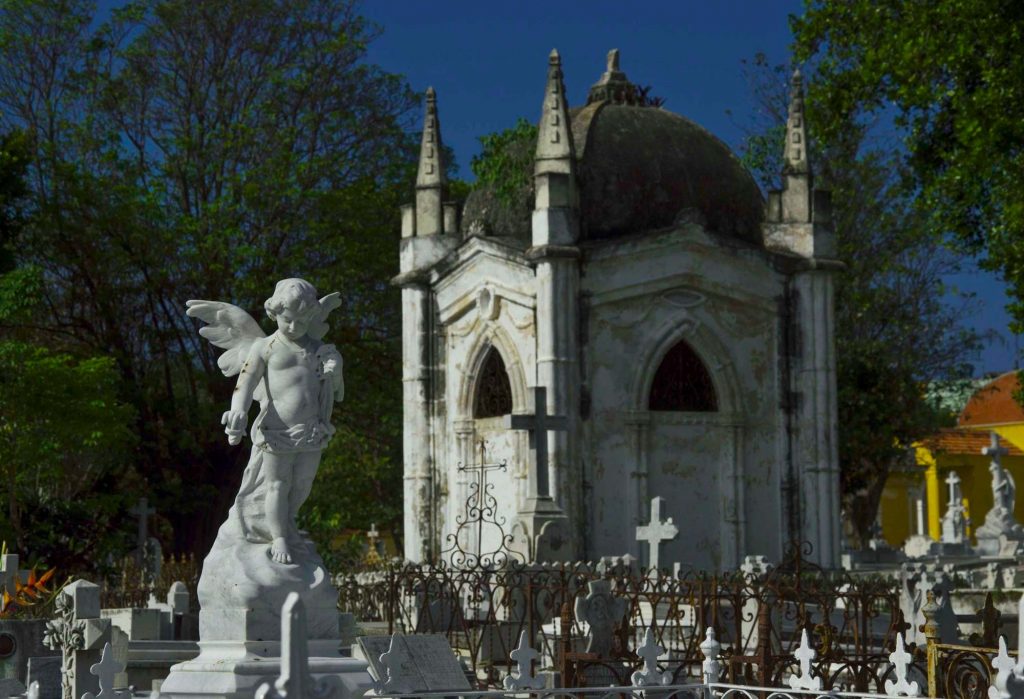
Back in the 19th century, Cuba still held onto the medieval tradition of burying people in churches. However, this practice became outdated not only due to population growth but also because of the hygiene issues it caused. So, in 1806, Havana’s first cemetery, Espada, was opened in the western part of the city.
In 1867, Cuba was hit hard by a cholera outbreak, and the remaining spaces in the cemetery quickly filled up. Colon Cemetery was established in 1876, because there was no space left in Espada.
Initially, the cemetery was divided into sections for people of different social statuses. Today, it houses 800,000 burials, 53,000 of which are adorned with granite monuments and marble sculptures. The project was designed by Spanish architect Calixto de Loira, who also became the first person buried there. He was only 32 years old at the time of his death.
Architect named his project “La Pallida Mors.” He was inspired by the poems of Horace: “Pallida mors aequo pulsat pede pauperum tabernas regumque turres” (Pale death walks with equal step through the hovels of the poor and the palaces of kings). Even after death, it’s easy to see who enjoyed wealth in life and who did not.
🎬The Colón Cemetery in Havana was featured in the film “Death of a Bureaucrat” (La Muerte de un Burócrata). This 1966 comedy by Cuban director Tomás Gutiérrez Alea satirizes bureaucracy and communism. The story begins with the death of a model worker who is buried with his labor card as an honor. However, his widow needs this document to receive her pension.
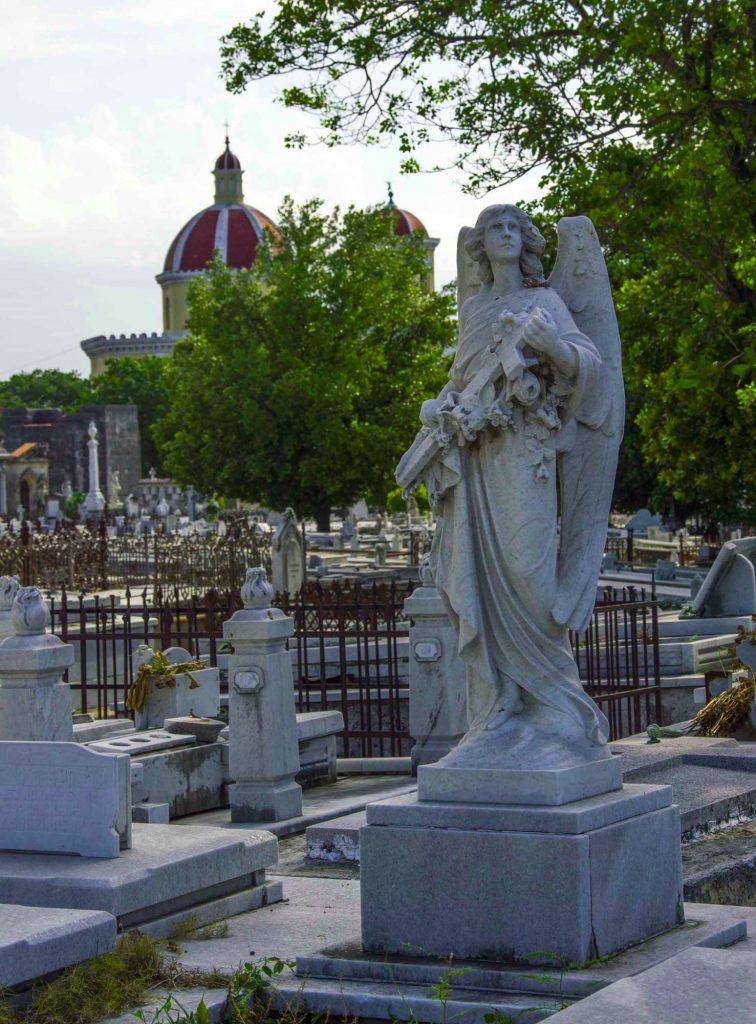
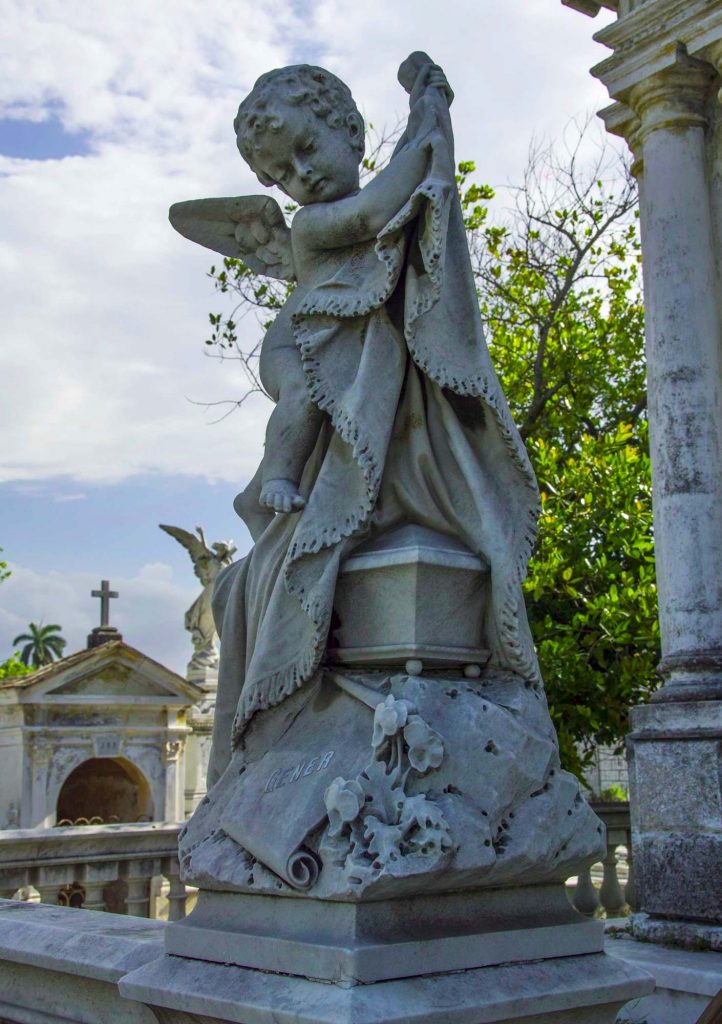
Where is Christopher Columbus Buried?
While traveling through Latin America, you’ll often hear the name Cristóbal Colón. We know this name well in its English version — Christopher Columbus. The cemetery is named in his honor, but the explorer himself is not buried here.
Columbus died in 1506 in the Spanish city of Valladolid and was buried in Seville. In the 16th century, his remains were moved to the island of Hispaniola, which is now occupied by the Dominican Republic and Haiti. This is the island where the explorer first landed in the New World. Two hundred years later, war broke out on Hispaniola between France and Spain, so the Spaniards moved Columbus’s remains to the tranquil Cuba. He was buried in the Havana Cathedral.
In 1897, Columbus’s remains returned to Seville. However, such journeys did not escape legend. There are rumors that all this time, Columbus’s younger brother Diego or his son, also named Christopher, were transported across the ocean. Since then, there have been disputes between Spain, the Dominican Republic, and Cuba over who possesses the real remains of Columbus.
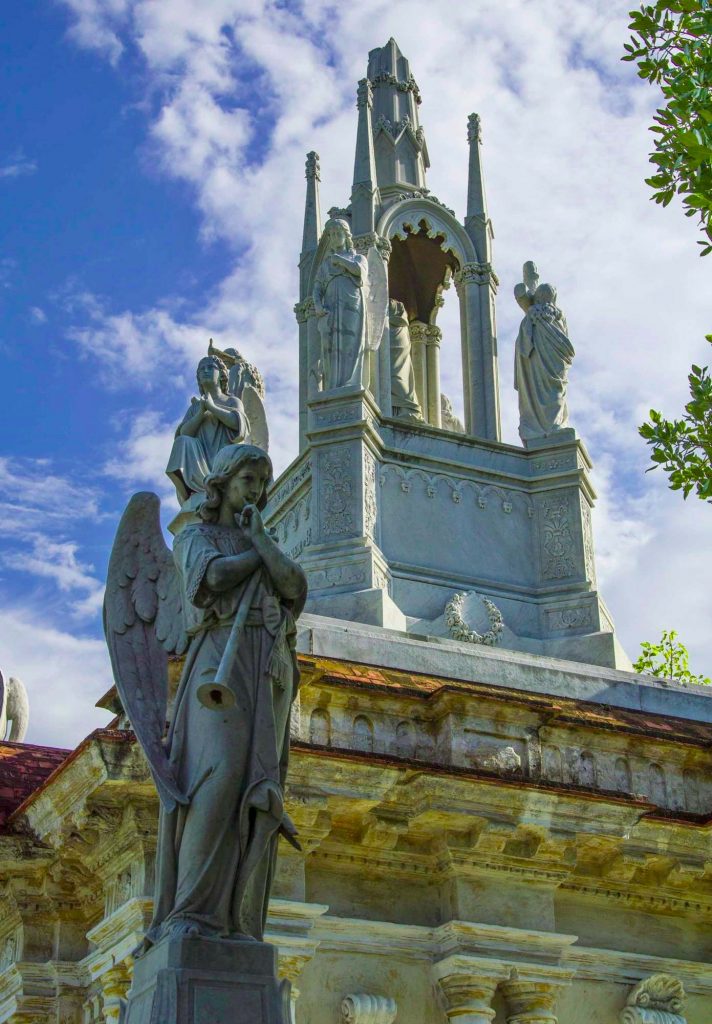
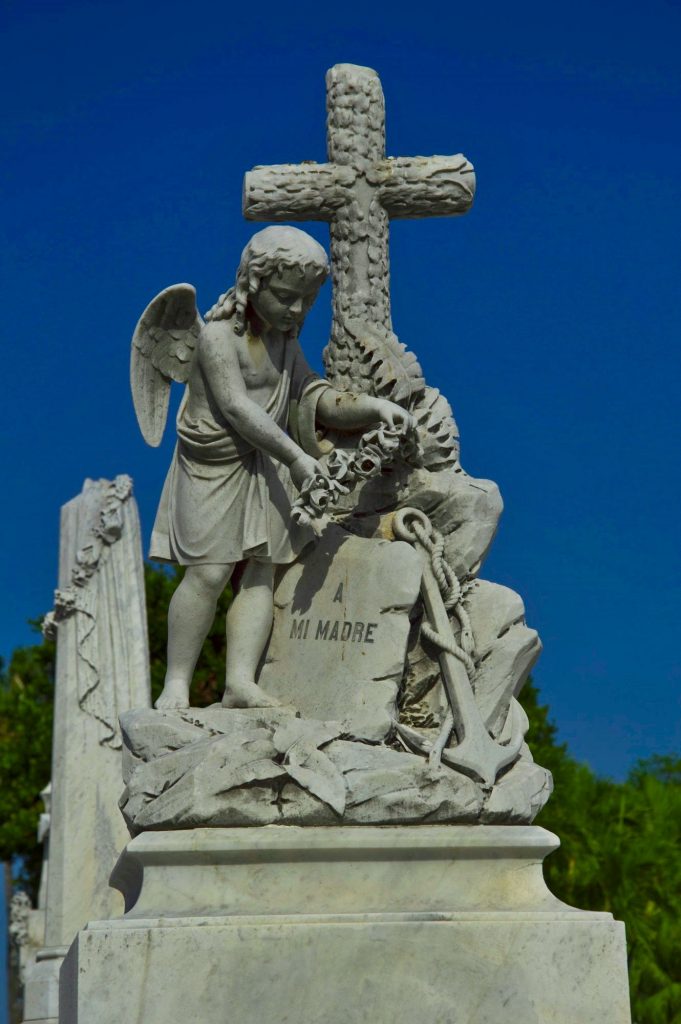
Why Didn’t Fidel Castro Want to Be Buried in Colón Cemetery?
Fidel Castro died on November 25, 2016, and was almost immediately cremated. His ashes embarked on a four-day journey of nearly 1,000 km across the island before being finally buried in the Santa Ifigenia Cemetery in Santiago de Cuba. This city is near Fidel’s birthplace in Birán and is considered the “cradle of the Cuban Revolution.”
Fidel did not want to be buried in Havana alongside Cuban aristocrats and state figures against whom he had fought so hard.
15 Famous Mausoleums in Colón Cemetery in Havana

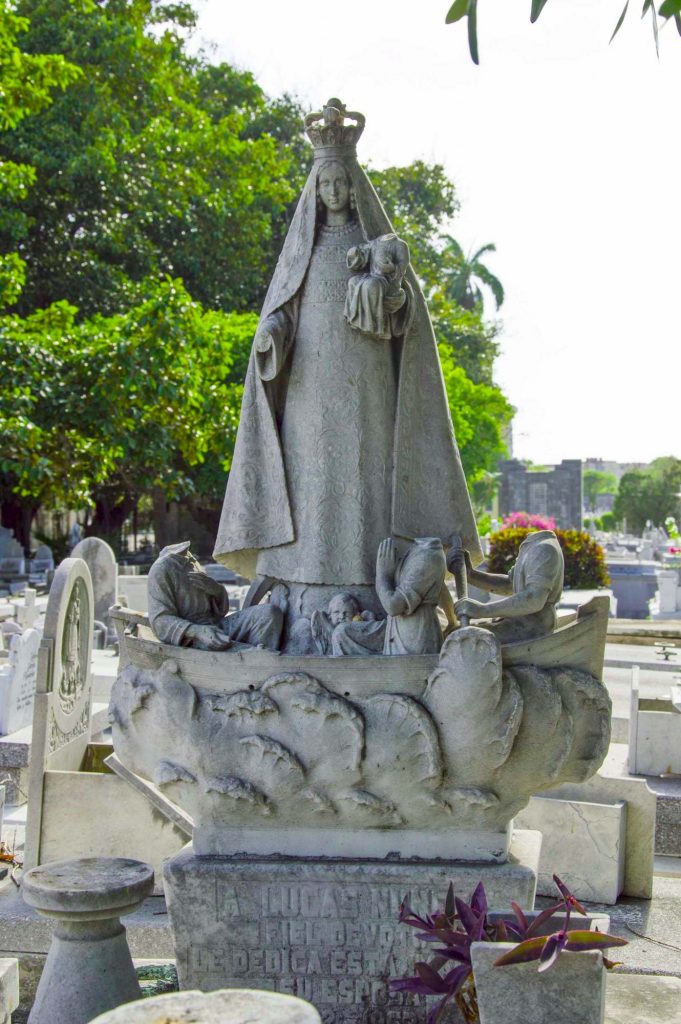
At Colon Cemetery, you’ll find the graves of political figures, famous musicians, and writers. The cemetery’s grounds are divided by avenues and perpendicular streets, lined with tall palm trees. At the center is the Central Chapel, built in 1886. It’s still in use, and among its 700 niches, there are some still available. The mausoleums of wealthy Havana residents resemble colonial mansions, complete with domes and stained glass windows. There’s even a pantheon with a miniature copy of an Italian chapel! Havana’s cemetery can be compared in beauty to Recoleta in Buenos Aires or Poblenou in Barcelona.
The most beutiful monuments in the cemetery stand along Avenida de Colón, near the northern entrance.
Firefighters Memorial — The Tragedy of 1890
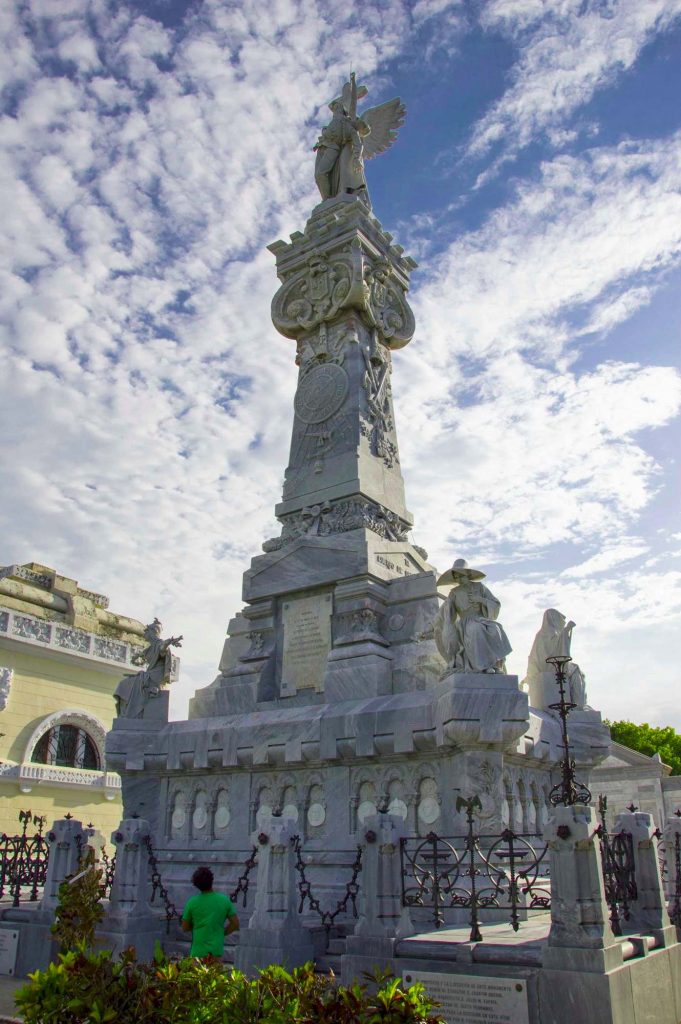

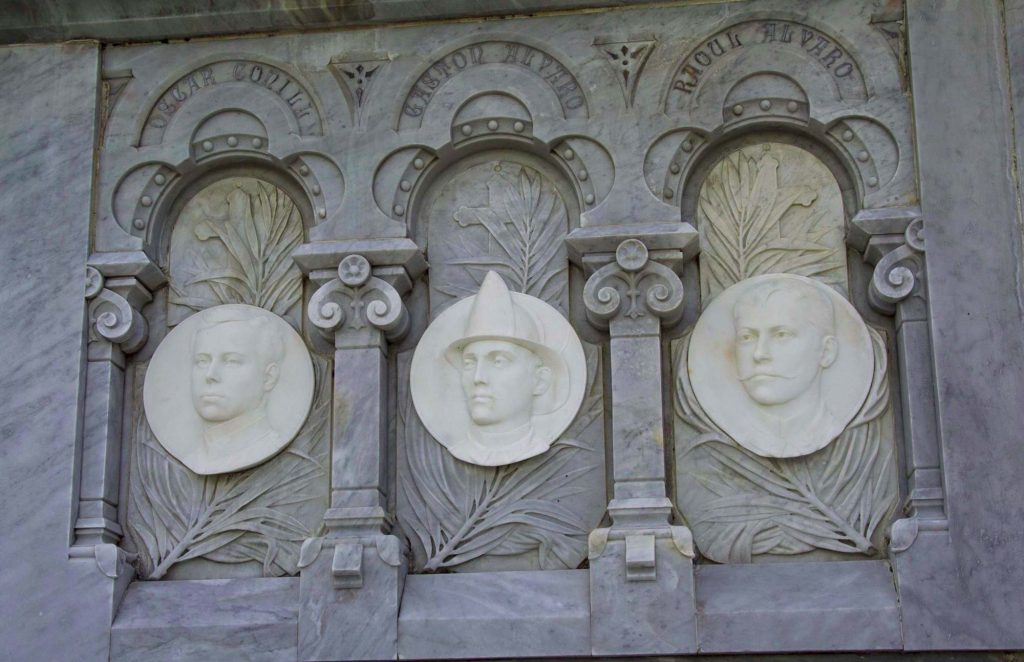
This monument is dedicated to the firefighters who died in an accident at the “Isasi” store in Havana. The fire started on May 17, 1890. The owner, José Antonio, did not inform the firefighters that there were explosive materials stored in the building. As a result, 32 people died, including 25 firefighters and volunteers.
In 1897, over 10,000 people attended the dedication of this tomb. The monument is made of Carrara marble and is surrounded by chains symbolizing the tears of the Cuban people.
💡The sculptor Agustín Querol created portraits of each firefighter. Since he couldn’t find an image of one of the deceased, he used his own face instead!
Monument to the Medical Students
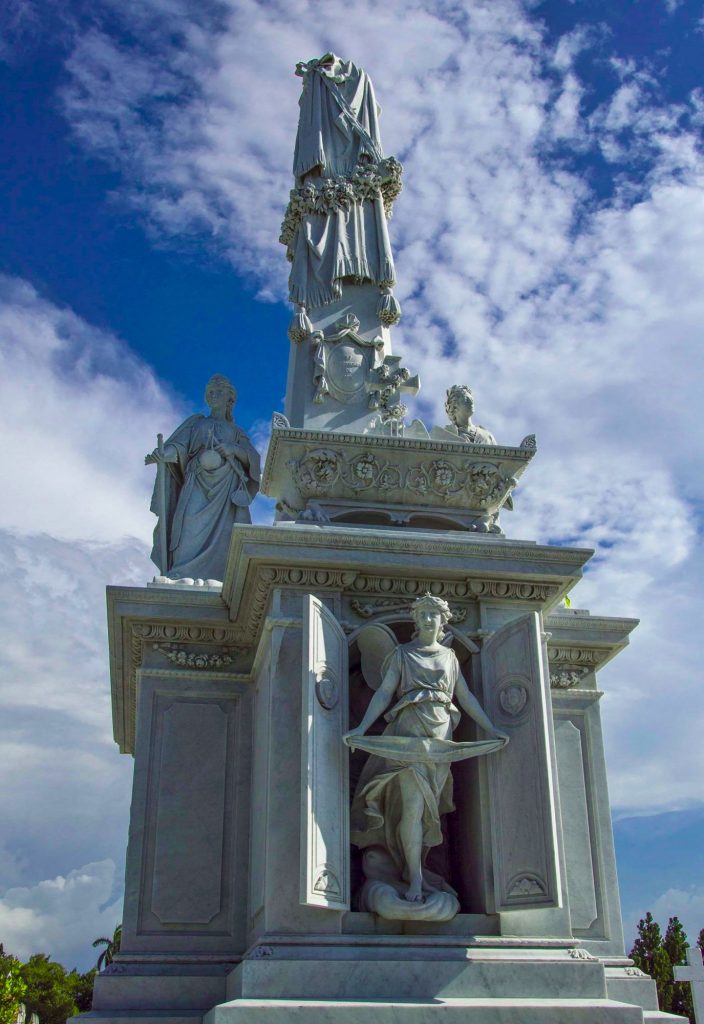
This mausoleum is dedicated to eight students from Havana’s Medical School who were executed on false charges.
This occurred in 1868, during the height of the Cuban War of Independence. The students were playing on the unfinished grounds of Colón Cemetery. The next day, they were arrested and accused of desecrating the grave of Spanish General Gonzalo de Quesada. Despite some influential residents of the city defending them, it wasn’t enough.
On November 27, 1871, the Spanish military executed the young men in a Havana prison. Dr. Fermín Valdés Domínguez tirelessly searched for the children’s remains for 16 years, which were hidden by the authorities. His efforts succeeded, and he called on the public to raise funds for a monument to the victims. On November 27, 1890, the monument by José Vilalta was solemnly unveiled.
Mausoleum of José Gener y Batet — Tobacco Magnate
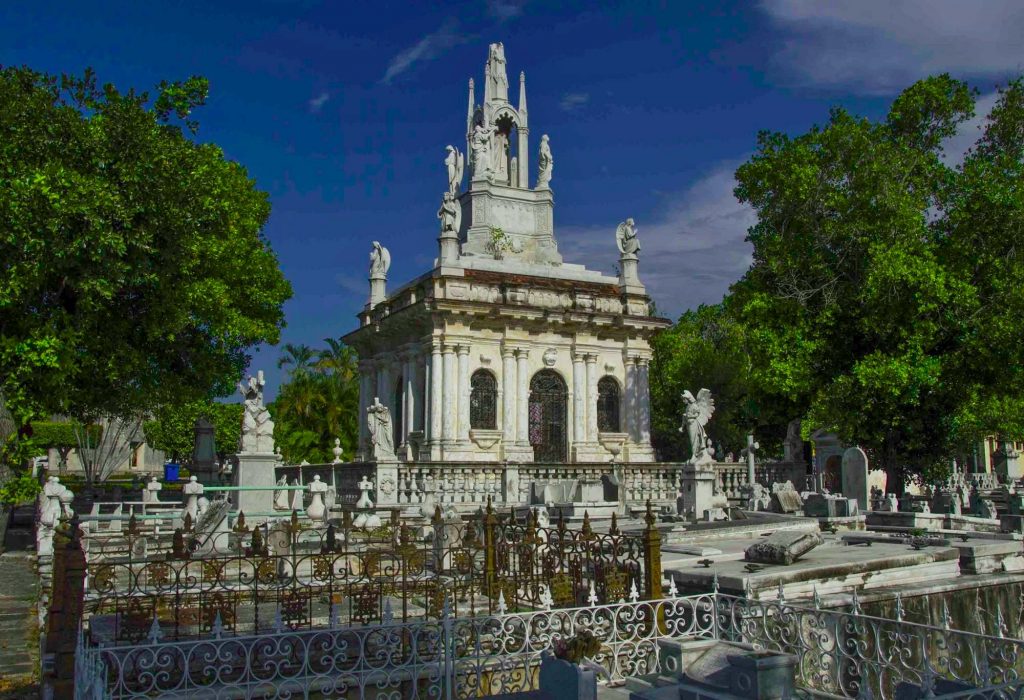
José Gener y Batet was a Catalan entrepreneur and philanthropist. At the age of 13, he went to Cuba to earn money. In Havana, he got a job as a tobacco shop clerk. After saving enough money, he bought a tobacco plantation. His business thrived: in 1865, he founded the cigar brand “La Escepción” and also traded in sugar and “Gener” cigars.
💡Today, “La Escepción de José Gener” cigars are worth $500 each, making them some of the most expensive in the world.
In 1873, Gener y Batet returned to Spain, where he engaged in philanthropy. He had to leave Cuba after the incident with the execution of medical students, where he stood against the innocent youths.
Mausoleum of Julio de Quesada
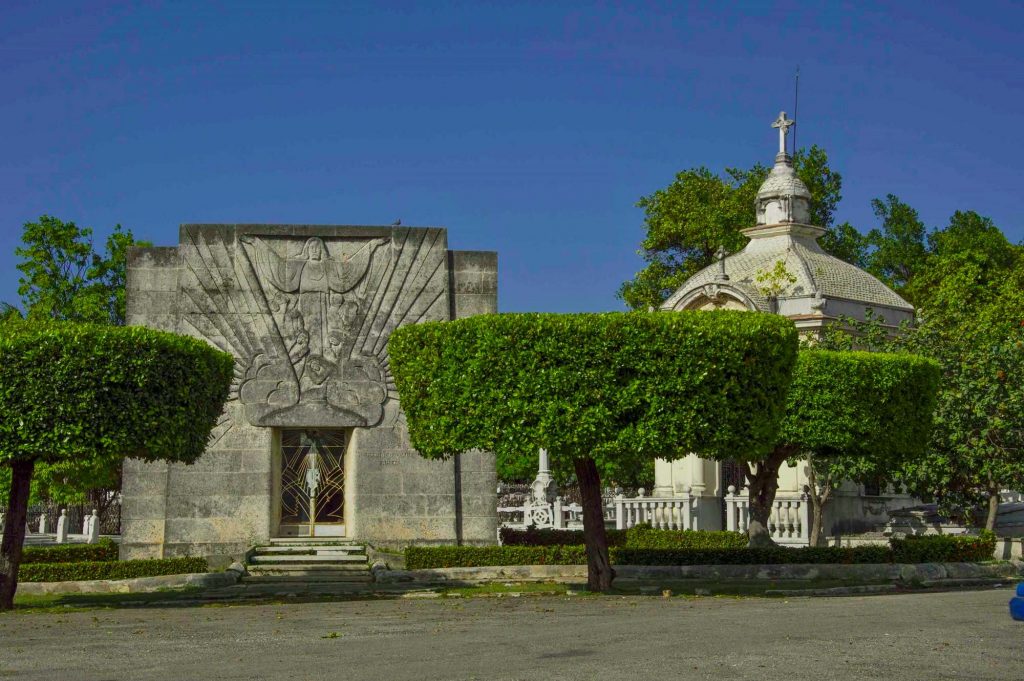
A beautiful pantheon marked on the map as a “work of art”. It is adorned with a stone relief of Christ created by Cuban avant-garde sculptor Teodoro Ramos Blanco. Unfortunately, I couldn’t find any information about Julio de Quesada himself.
Pantheon of Falla Bonet
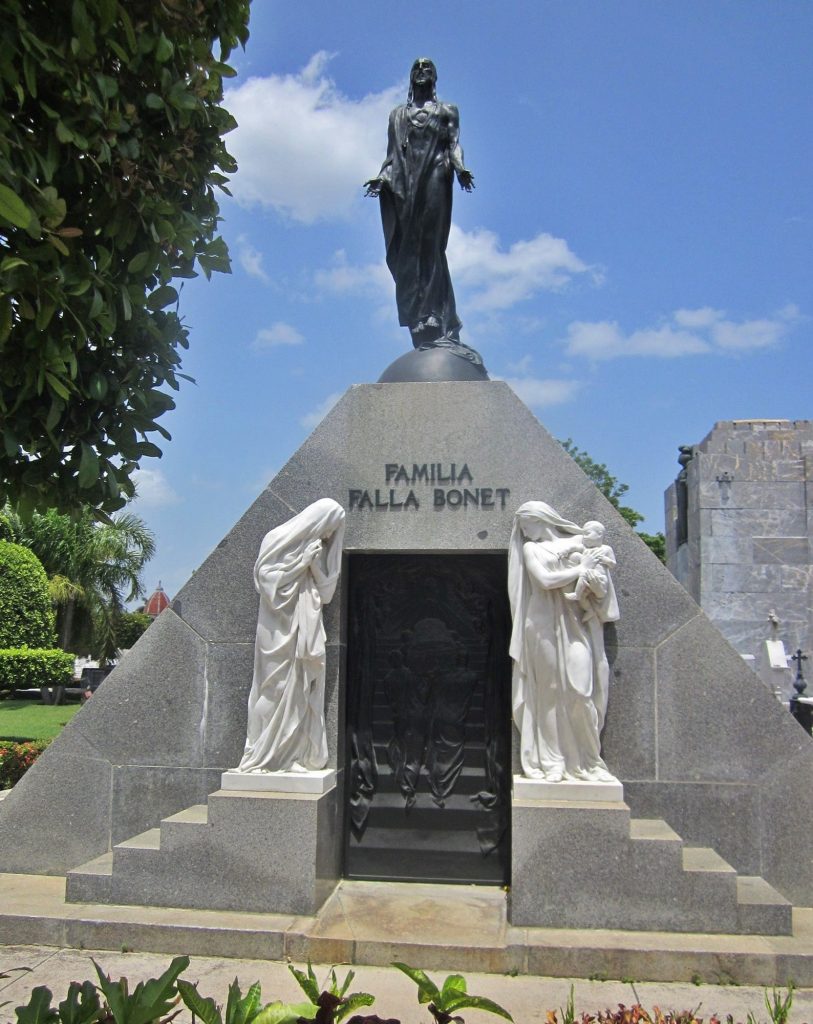
Eutimio Falla Bonet was a wealthy industrialist and philanthropist. In the 20th century, Cuba’s high society often traveled to Europe, and the Bonet family was no exception. In Spain, they became acquainted with the works of the talented architect Mariano Benlliure and commissioned a family pantheon from him.
The mausoleum is a truncated pyramid made of large granite blocks. The bronze door is decorated with a bas-relief: four men, depicted from the back, carrying a coffin into the mausoleum. On either side of the door are two women. One symbolizes pain, wringing her hands in prayer and weeping inconsolably. The other holds a child, symbolizing life and innocence. At the top of the pyramid is a sculpture of Christ ascending to heaven.
José Matta’s Pyramid
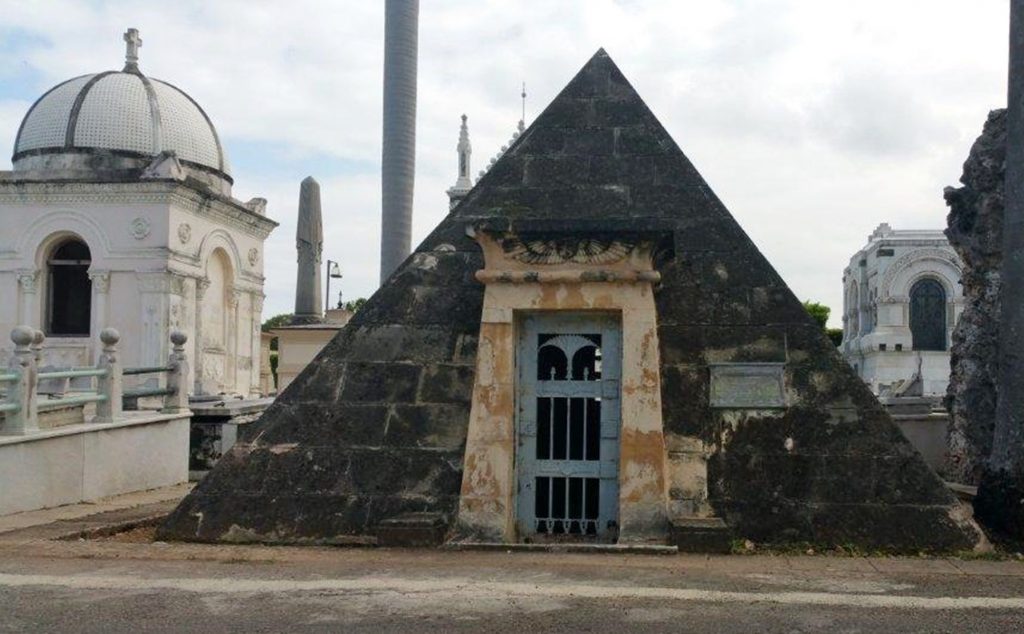
Colon Cemetery in Havana is full of intriguing graves. One of the most striking is the tomb of Cuban architect José Matta, which is a miniature replica of one of Egypt’s famous pyramids. Matta was the director of the School of Architecture at the University of Havana and a big fan of everything related to Egyptian pharaohs. After his death in 1919, his students and colleagues built his tomb in the shape of a pyramid to honor him. Inside, it is decorated with Egyptian motifs symbolizing the brevity of life on earth.
The Grave of Fidelity
Jeannette Ford Ryder was an American activist. She came to Cuba in 1869 and founded the “Orchestra of Piety,” a charitable organization protecting orphans, street women, the poor, and domestic animals. When Jeannette died, her dog, Rinti, refused to leave the tomb, starving itself to death. Sculptor Fernando Boada created a monument symbolizing love and loyalty.
La Milagrosa — The People’s Saint
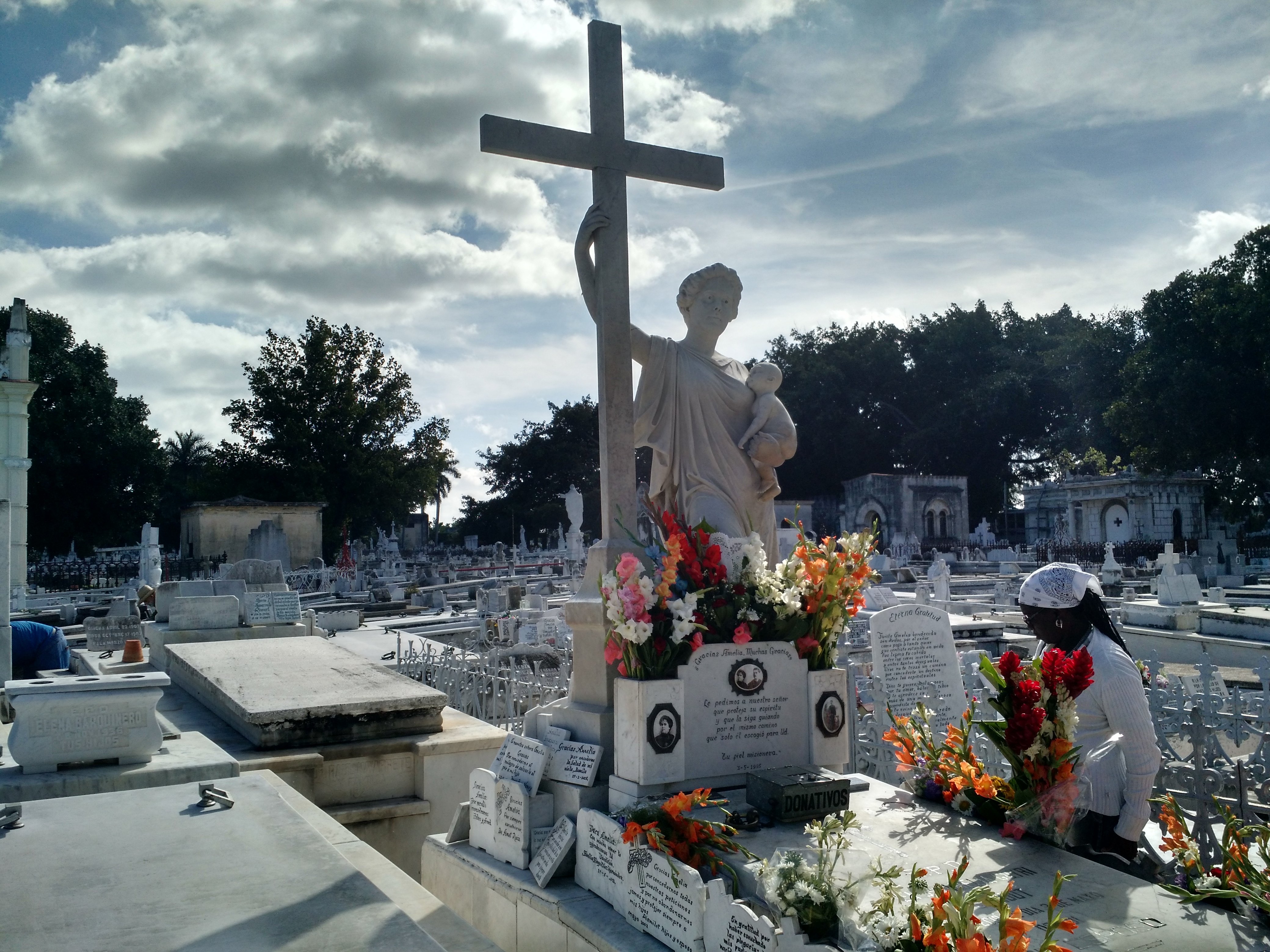
The grave of Amelia Goyri de la Hoz, also known as the Miraculous Lady, is always covered in flowers. In the early 20th century, Amelia, the only daughter of an aristocratic family, married her cousin José Vicente Adot y Rabell. He was a modest young captain who earned his title during the Cuban War of Independence but had no fortune. They lived happily for a year.
On May 3, 1903, Amelia died giving birth to a baby girl who did not survive. Amelia was buried with her baby between her legs according to the customs of that time.
The legend says that Vicente never accepted his loss and never remarried. Every day, dressed in black, he visited the grave. He knocked three times on the tomb with a bronze ring, and talked to Amelia before leaving without turning his back on the grave. Six years later, Amelia’s father died, and Vicente wanted to see his wife’s grave again. He found that both bodies were intact, and the baby, initially buried between Amelia’s legs, was now in her arms.
This story inspired Cuban sculptor José Vilalta Saavedra to create the monument above the tomb. It is a 23-year-old woman holding a baby in her left arm while her right hand touches a Latin cross, symbolizing sacrifice. More and more people started visiting the grave, asking the miraculous lady for protection. The legend of her miracles has been passed down through generations. La Milagrosa helps pregnant and infertile women and heals children. Cuban believers follow Vicente’s ritual: knocking three times on the tomb wall and leaving without turning their backs.
The Man Buried Vertically
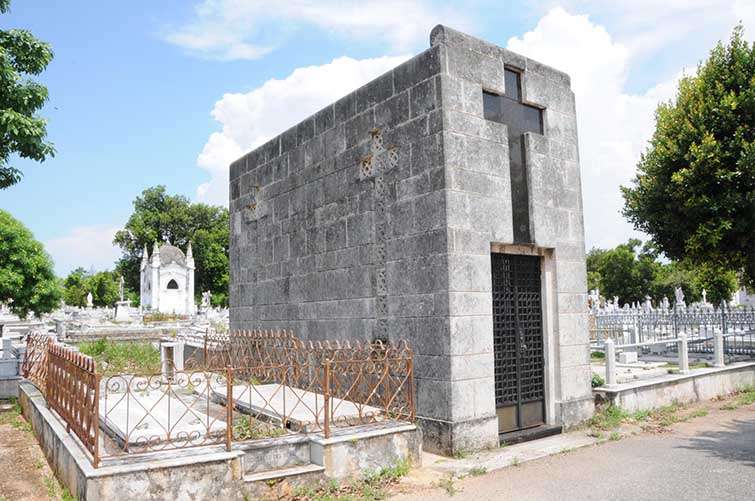
Eugenio Casimiro Rodríguez Carta was the police chief of Cienfuegos. He also was a hitman and protector for the local elite. Eugenio was sentenced to life imprisonment for murder but fell in love with Maria Teresa Zayas, the president’s daughter, while in jail. He was pardoned, married her, and had a whirlwind political career. Eugenio was buried vertically in a crypt. He believed that a man who always landed on his feet in life (like cats always landing on their paws) should stand firmly on his feet in hell.
Leocadia Herrero — The Spiritual Medium of Santeros
Leocadia Pérez Herrero was a spiritual medium for Cuban santeros (practitioners of Santería). She never charged for her services. Her mentor was Brother José. He is knows as “dead man” who performed acts of mercy and predicted the future through Leocadia. No one knew his real name or origin.
After her death in 1962, her grave became a place where people tried to reconnect with her and Brother José. They leave flowers, glasses of rum, and cigars. Leocadia loved classical music, especially the violin. So every year on March 19, there is a procession of violinists visits her grave at the cemetery. Her modest grave is located at Cuartel S.E. calle I, between 9 and 11.
José Raúl Capablanca
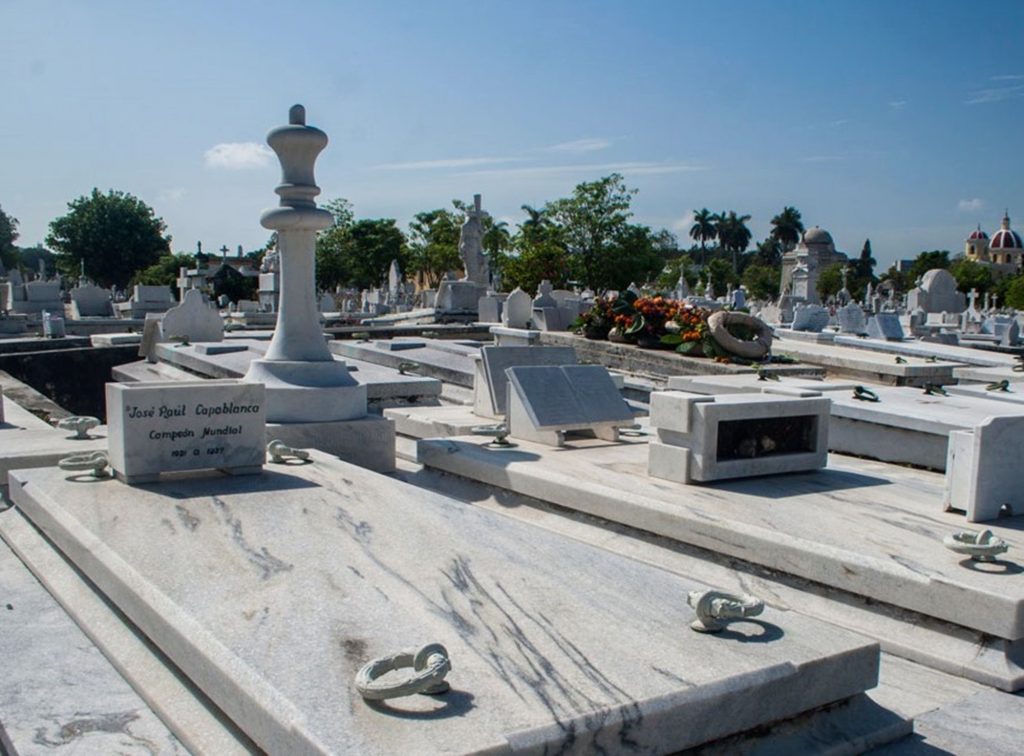
The grave of chess player José Raúl Capablanca can be recognized by the marble chess king figure. Capablanca died in 1942. He was one of the greatest chess players, often called the “Mozart of chess.” From 1920 to 1927, he was the world chess champion, a fact noted next to his name on his grave.
Ibrahim Ferrer
Ibrahim Ferrer Planas was one of the most famous Cuban musicians. He played in the original Buena Vista Social Club under the nickname “Super Grandpa” (Superabuelo).
Gaspar Villate
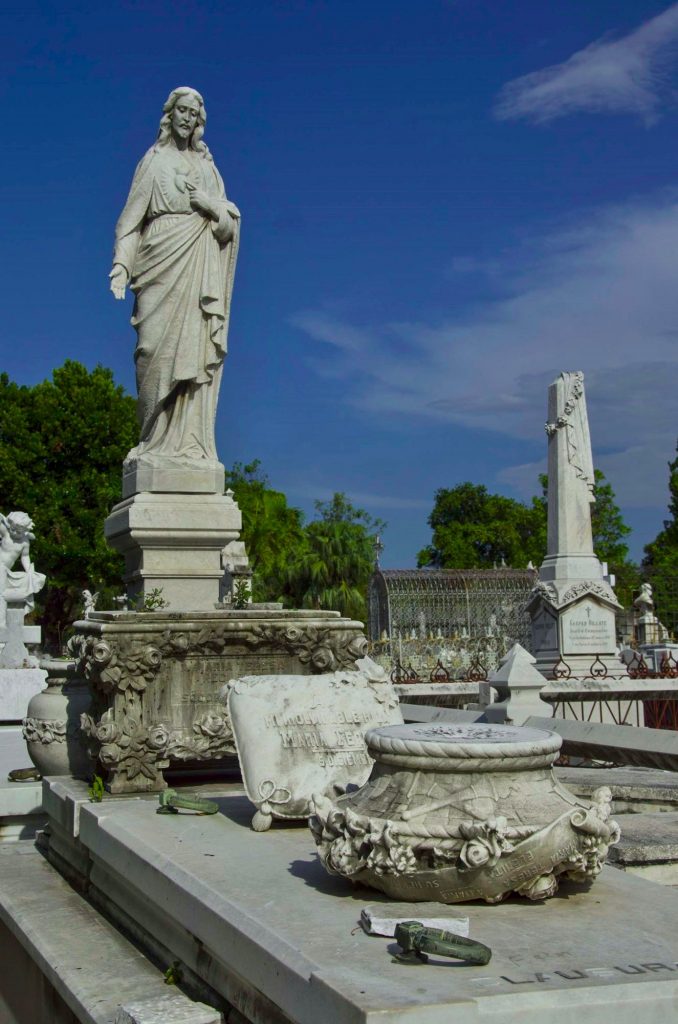
The monument dedicated to composer Gaspar Villate is on the right. He was a Cuban composer who wrote several successful operas. His works dedicated to Cuba, such as “La virgen tropical” and “Adios a Cuba,” remain popular.
